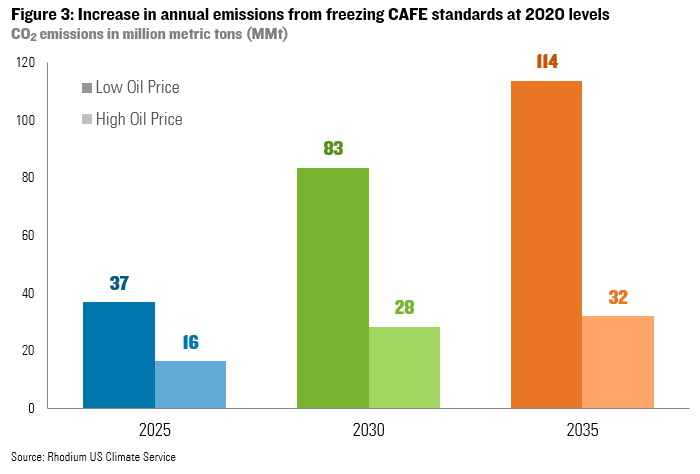If the White House’s plan goes into effect, it would deliver one of the single most devastating blows to the effort to curb US greenhouse-gas emissions.
The policy: Now that the administration’s proposal is coming into sharper focus, we’re getting a clearer sense of just how much damage could be done. The Los Angeles Times reported recently that the draft plan is to freeze average vehicle fuel standards at 2020 levels of 42 miles per gallon, rather than ratcheting them up to 55 miles per gallon by 2025.
By the numbers: In an analysis published today, the Rhodium Group concluded that the policy shift would increase oil consumption by as much as 283,000 barrels per day in 2025, and 881,000 by 2035, under a scenario of low oil prices. That, in turn, would add up to 37 million metric tons of additional carbon dioxide emissions annually by 2025, and 114 million by 2035, the New York-based research firm found. (With high oil prices, those emissions figures would fall to 16 million and 32 million, respectively.)
Some context: Total US greenhouse-gas emissions in 2016 were equivalent to 6.5 billion metric tons of carbon dioxide.
Stuck in the slow lane: The administration’s proposal would also revoke states’ ability to exceed federal mileage rules, as California has done under a waiver. A coalition of 18 states have already filed a lawsuit against the EPA, preemptively challenging such a change.

